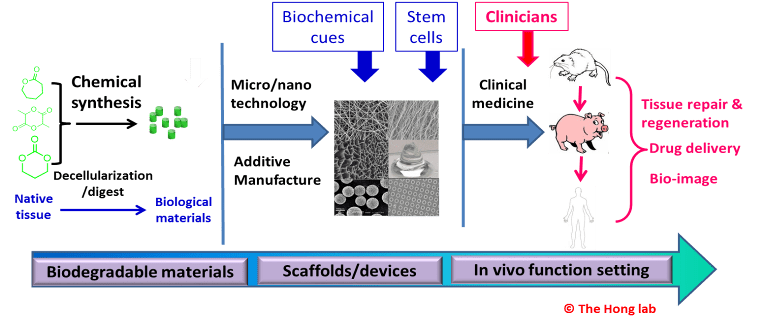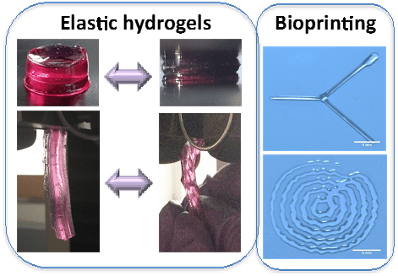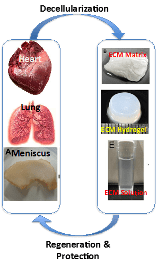
New functional elastic biomaterials for cardiovascular tissue repair and regeneration

Cardiovascular diseases such as heart infarction and coronary vascular disease are the top 1 killer for human being in the worldwide. Heart muscle and vascular regeneration using biomaterial guided tissue engineering approach is a promising way to save patient life. Thus, it is required to design the biomaterials mimicking with functions and mechanical properties of soft and elastic heart muscle and blood vessels. On the basis of such strategy, my group has developed soft and elastic polyurethane based biomaterials with functions of triggerable degradation (matching tissue growth), low-initial modulus (soft tissue mechanical matching) and conductivity (mimicking muscle electric activity). Our lab first time synthesized single-component conductive biodegradable elastic materials without adding an extra dopant. In addition, we are pursuing further research on the interaction between functional biomaterial and stem cells, and translational research in cardiac patches for heart infarction treatment and vascular grafts for blood vessel replacement as well as other collaborative projects such as neuron and muscle regeneration.
3D bio-printable elastic biomaterials for tissue regeneration

3D printing technique is a powerful tool in scaffold fine design, stem cell engineering, and living tissue models in the field of tissue repair and regeneration. For soft tissue regeneration, it is required that the printable biomaterial is robust, soft and elastic, and is safe and tunable to the cells, however, such material is rarely found. Thus, we are seeking a new way to developing printable and safe biomaterials for 3D cell printing in tissue repair and regeneration. Our lab has developed a novel elastic and robust hydrogel with a single-network and photo-sensitivity, which is more feasible than conventional double-network robust hydrogels for 3D cell printing.
Engineering decellularized biologic matrix for tissue repair and protection

Decellularized scaffolds isolated from the animal tissues/organs can promote the site-specific, constructive remodeling of the injured tissues, and have been commonly used in numerous preclinical and clinical trials. ECM materials elicit a controlled host tissue response through the recruitment of immunomodulatory cells of the innate immune system as well as stem and progenitor cells, ultimately leading to positive, constructive tissue remodeling and regeneration. Furthermore, injectable ECM materials would be more interesting in clinic due to the non-invasive delivery and simple cellularization. My lab has developed meniscus, heart, lung based ECM scaffolds and hydrogels for tissue repair and protection.
Newly designed functional bioadhesives for soft tissue repair
Bioadhesive is an very important category of biomaterials to be used for tissue gluing. Current bioadhesives,, such as collagen, fibrin and other nature polymer derivation, are still not strong and functional for various tissue adhesion. It is the first time to develop a nanocomposite adhesives from mussel-inspired hydrogel adhesive and biodegradable nanoparticles for muscle-skin gluing. The new bioadhesive is under design to be stronger in adhesion, and to be more functional for tissue repair.







